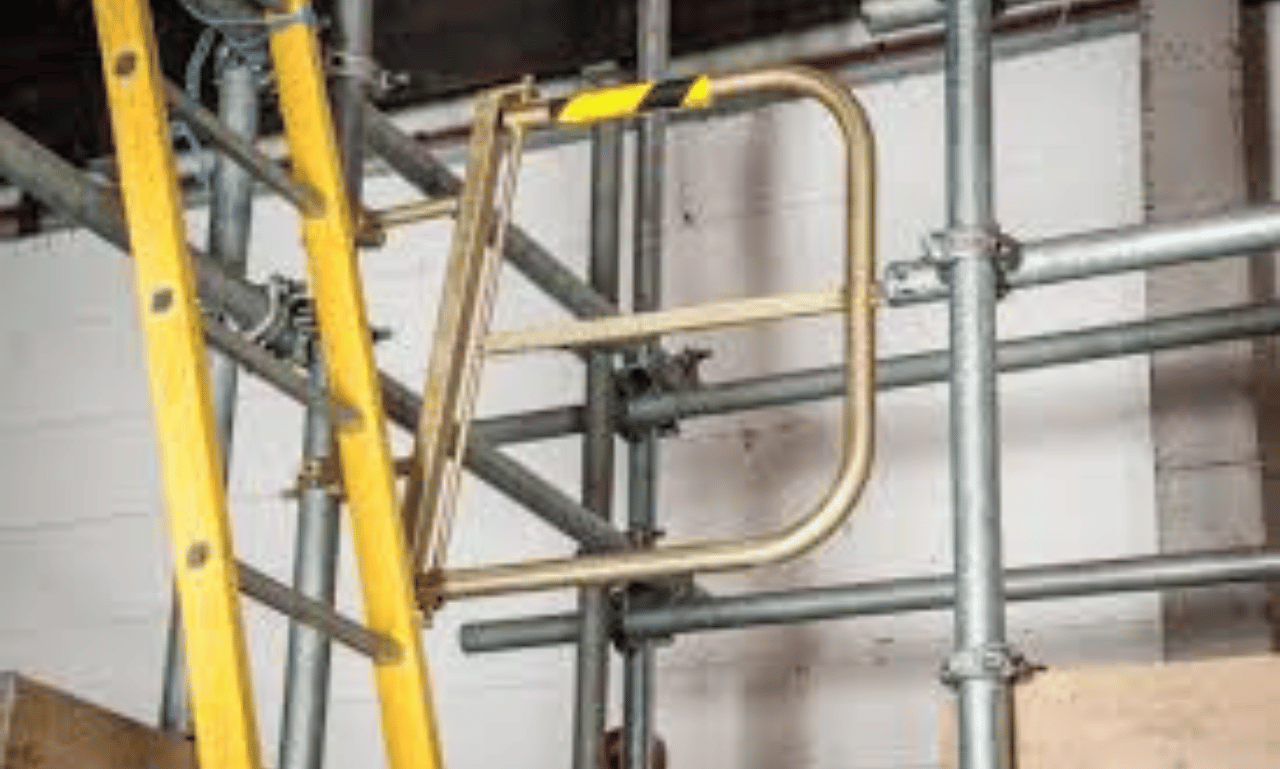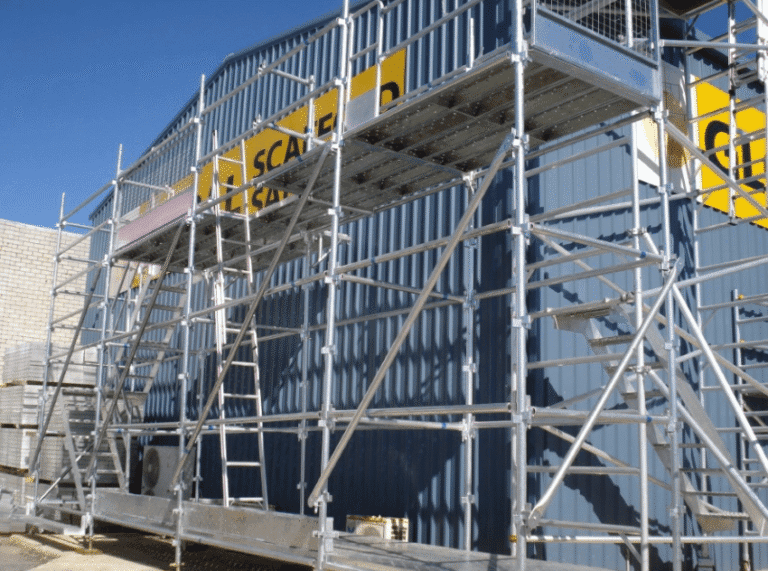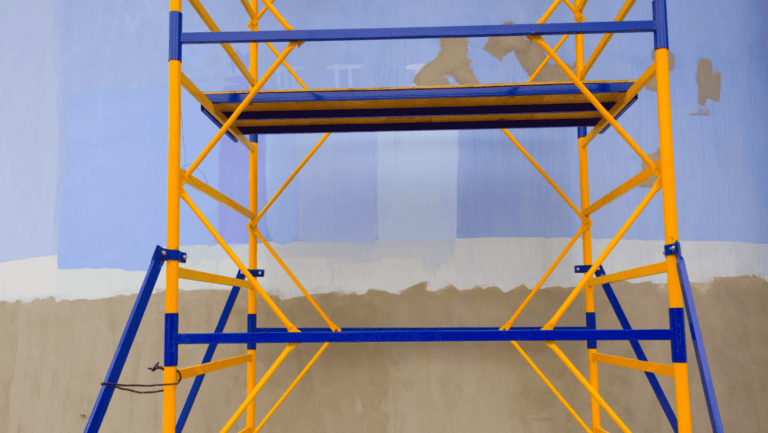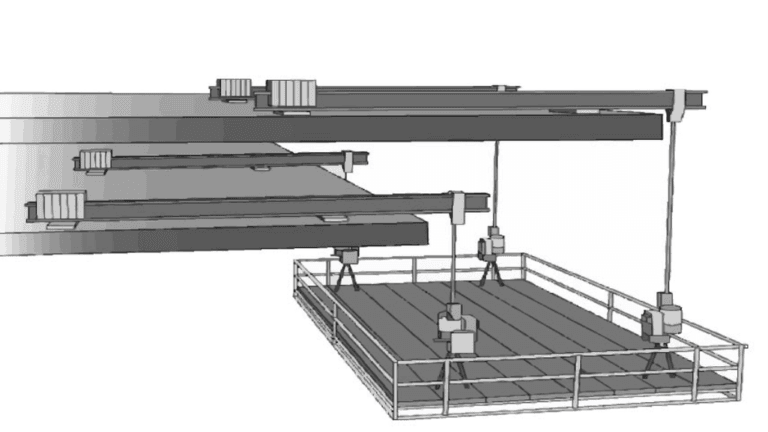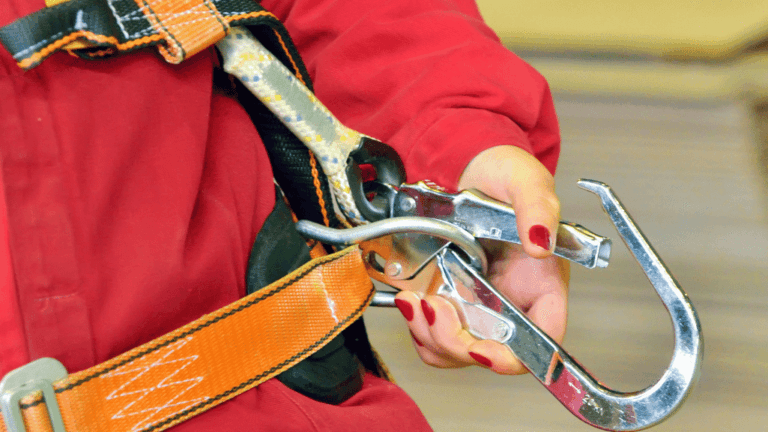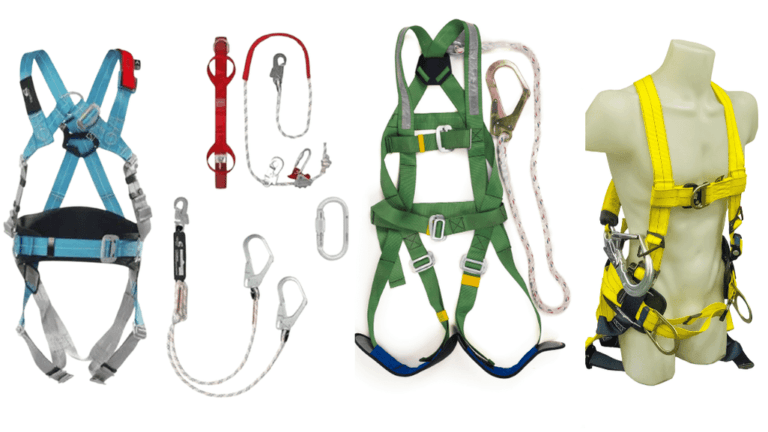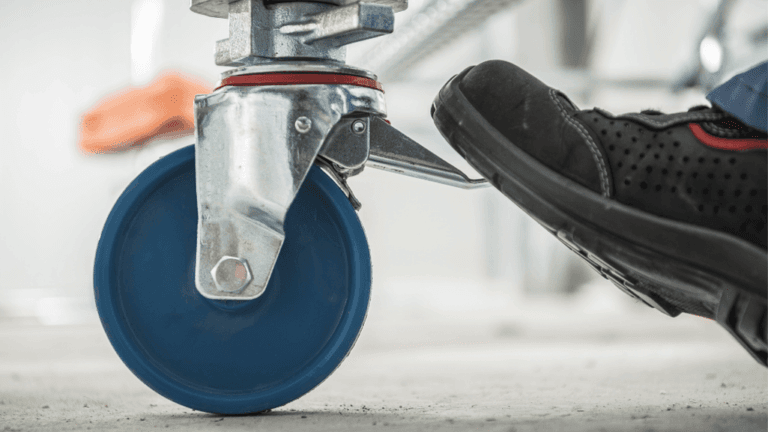Phone:
(+65)8319-0742
When it comes to working on construction sites, safety should always be a top priority. One crucial aspect of ensuring a safe working environment is choosing the right scaffolding ladder. With various types available, such as aluminum, adjustable, multi-purpose, lightweight, and more, it’s important to select a ladder that meets the specific needs of your work site.
Key Takeaways:
- Consider the height and type of work you’ll be doing when selecting a scaffolding ladder.
- Aluminum scaffolding ladders offer durability and lightweight features.
- Adjustable scaffolding ladders provide versatility for different work site requirements.
- Multi-purpose scaffolding ladders offer functionality for various tasks.
- Choose a lightweight and portable scaffolding ladder for easy transportation.
- Extendable scaffolding ladders provide the flexibility to reach different heights.
- Durable scaffolding ladders ensure long-lasting performance on construction sites.
Choosing the Right Ladder for the Job
Before embarking on any construction project, it is essential to select the appropriate ladder that suits the specific requirements of the job. Different tasks call for different types of ladders, and understanding the distinctions will ensure both safety and efficiency on the work site.
When working at low to medium heights, a step ladder proves to be a reliable choice. Step ladders offer stability and are equipped with broad, flat steps that provide a secure platform for workers. These ladders are perfect for tasks such as painting, cleaning, or accessing shelves or cabinets. Their portable nature and self-supporting features make them versatile and easy to use.
On the other hand, when it comes to reaching higher places, an extension ladder becomes indispensable. Extension ladders are designed with adjustable sections that can be extended to achieve the desired height. They are commonly used for tasks such as window cleaning, outdoor repairs, or reaching elevated areas for maintenance work.
However, when working on scaffolding structures, it is crucial to opt for a designated scaffolding ladder. These ladders are specifically designed with ladder scaffold brackets to provide enhanced stability and security when used on scaffolding platforms. Both lightweight and durable, scaffolding ladders enable workers to navigate comfortably and perform their tasks effectively without compromising safety.
“Choosing the right ladder for the job is the first step towards ensuring a safer and more productive work environment.”
By carefully assessing the height requirements and considering the work tasks involved, construction professionals can make informed decisions regarding the ladder selection.
Key Takeaways:
- Step ladders are ideal for low to medium heights and offer stability and portability.
- Extension ladders are essential for reaching higher places and are adjustable to achieve the desired height.
- Scaffolding ladders are specifically designed for use on scaffolding structures, providing enhanced stability with ladder scaffold brackets.
The Benefits of Scaffold Steel Ladders
When it comes to construction site safety, using the right equipment is essential. Scaffold steel ladders have become a popular choice in the industry due to their unique advantages. These durable and strong ladders offer a range of benefits that make them an excellent option for construction sites.
One of the key advantages of scaffold steel ladders is their unmatched durability. Made from high-quality steel, these ladders are designed to withstand the rigors of the construction environment. They can handle heavy loads and resist damage, ensuring long-lasting performance.
Another significant benefit of scaffold steel ladders is their exceptional strength. Steel is known for its robustness, making it an ideal material for ladders that need to support workers and equipment at elevated heights. The sturdy construction of scaffold steel ladders provides added stability, reducing the risk of accidents and ensuring worker safety.
To further enhance stability and prevent wobbling or slipping, scaffold steel ladders come equipped with ladder scaffold brackets. These brackets secure the ladder firmly to the scaffold structure, eliminating any potential movement or instability during use. This feature not only improves safety but also increases efficiency and productivity on construction sites.
With their durability, strength, and built-in stability features, scaffold steel ladders are a reliable choice for construction site safety.
Investing in scaffold steel ladders not only reduces the risk of accidents and injuries but also improves overall work quality and efficiency. By providing a secure and stable platform for workers to perform their tasks, these ladders contribute to a safer and more productive work environment.
Next, we will discuss several essential tips for ladder safety on construction sites to ensure the well-being of workers and the success of construction projects.
Tips for Ladder Safety on Construction Sites
To ensure the safety of construction workers, it is crucial to prioritize ladder safety on construction sites. By following ladder safety guidelines and using proper scaffold steel ladders and equipment, we can significantly reduce the risk of accidents and injuries. Here are some essential tips for promoting ladder safety:
- Choose the right ladder for the job: Select a ladder that is suitable for the specific task at hand. Consider factors such as height, weight capacity, and material to ensure optimal safety and efficiency.
- Inspect and maintain ladders regularly: Before each use, thoroughly inspect ladders for any signs of damage or wear. Check for loose rungs, cracks, or bent parts. Regularly clean and maintain ladders to extend their lifespan and ensure their safe operation.
- Properly place ladders on stable surfaces: Ensure that ladders are placed on firm, level surfaces to prevent tipping or wobbling. Avoid placing ladders on uneven or slippery ground. Use ladder levelers or stabilizers when necessary to provide additional support and stability.
- Utilize scaffold accessories: Scaffold accessories such as ladder jacks and stabilizers can enhance ladder safety on construction sites. Ladder jacks provide additional support for ladders on scaffolding structures, while ladder stabilizers prevent ladder slipping or tipping over.
“Proper ladder placement and the use of scaffold accessories are vital for maintaining ladder stability and preventing accidents on construction sites.”
Remember, ladder safety is everyone’s responsibility. Empower your team to prioritize safety, report any unsafe ladder conditions, and collaborate in conducting regular safety meetings and training sessions. Together, we can create a culture of ladder safety that protects and empowers construction workers.
The Importance of Ladder Maintenance and Inspection
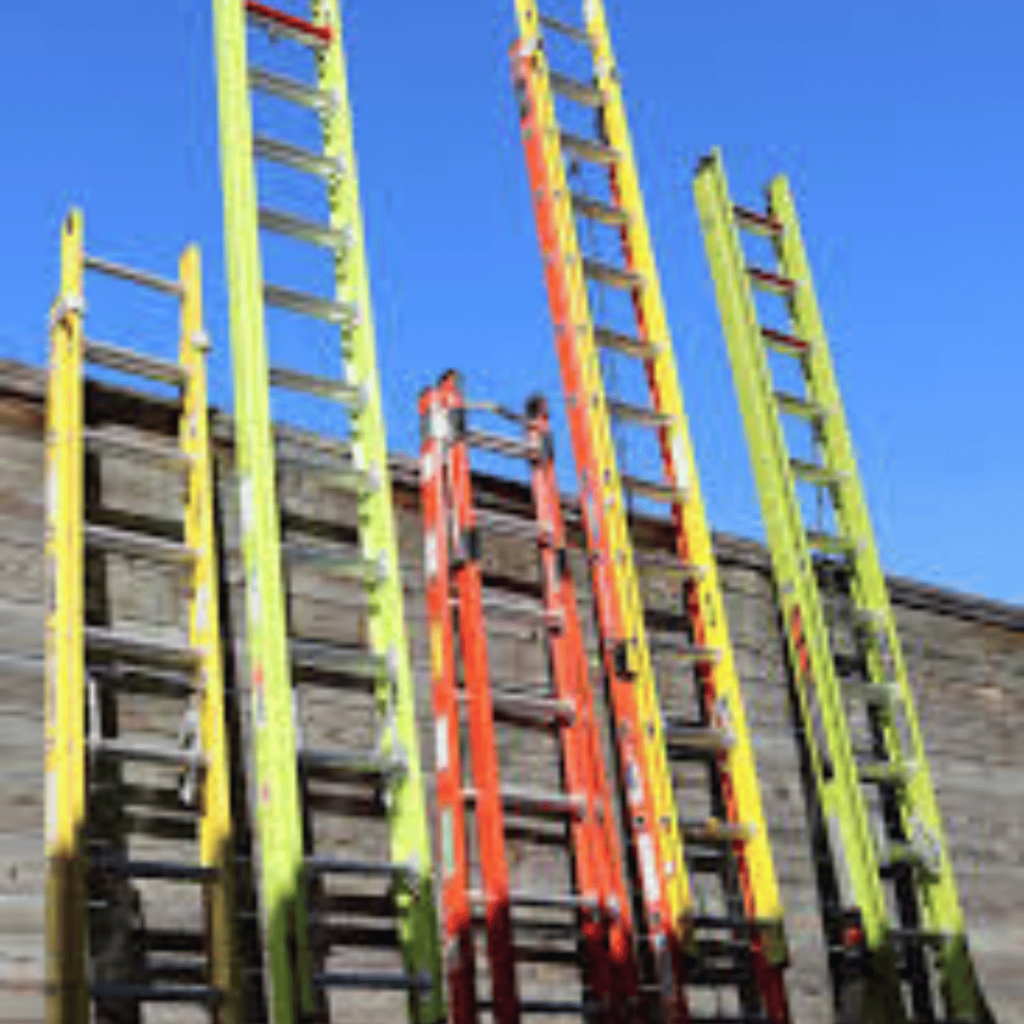
Regular maintenance and inspection of scaffolding ladders are critical for ensuring their safety and preventing accidents. To maintain a safe working environment, it is essential to prioritize ladder maintenance and conduct thorough inspections. By following these practices, you can identify potential hazards and address them promptly, reducing the risk of accidents.
Why Is Ladder Maintenance Important?
Proper ladder maintenance is crucial for preserving the structural integrity and performance of the equipment. Regular maintenance tasks, such as cleaning and lubricating moving parts, help prevent common issues like rust and stiffness, enhancing the ladder’s functionality and ease of use. Additionally, proactive maintenance ensures that any defects or damage are promptly identified and rectified, preventing further deterioration that could compromise ladder safety.
Inspecting Ladders for Safety
Prior to each use, it is vital to thoroughly inspect ladders for any signs of damage or wear. Start by visually examining the ladder to ensure there are no visible cracks, breaks, or deformations. Pay close attention to the rungs, side rails, and ladder feet, as these areas are susceptible to damage and can affect stability.
In addition to a visual inspection, perform tactile checks by running your hand along the ladder’s surface to detect any sharp edges, splinters, or rough areas that could pose a safety hazard. Furthermore, test the ladder’s stability by gently shaking it to ensure there are no loose or wobbly parts.
Tip: Always refer to the manufacturer’s guidelines regarding inspection procedures and recommended maintenance practices for specific ladder models.
Common Maintenance Issues to Look Out For
During ladder inspections, be vigilant for common maintenance issues that may compromise ladder safety. These may include:
- Cracks or fractures in the ladder’s structure
- Bent, loose, or missing rungs
- Corrosion or rusted components
- Weak or damaged ladder feet
- Loose or unstable connections between ladder sections
Taking Action on Damaged Ladders
If any signs of damage or defects are identified during inspection, it is crucial to take immediate action to remove the ladder from service until repairs or replacements can be made. Continuing to use a damaged ladder puts workers at risk of accidents and injuries, and should always be avoided.
Cleaning and Maintenance
Regular cleaning and routine maintenance play a vital role in prolonging the lifespan of scaffolding ladders and ensuring their ongoing safety. Here are a few tips for effective ladder cleaning and maintenance:
- Remove dirt, debris, and other foreign substances from the ladder using a soft brush or cloth.
- For tougher stains or grime, use a mild detergent solution and rinse thoroughly.
- Dry the ladder completely before storing it to prevent moisture-related damage.
- Keep moving parts lubricated with a suitable lubricant to ensure smooth operation.
Regular Inspection and Maintenance Schedule
To establish a proactive approach to ladder maintenance, it is advisable to implement a regular inspection and maintenance schedule. This schedule should include periodic inspections by a qualified individual, comprehensive cleaning practices, and routine lubrication of moving parts. By following a consistent maintenance routine, you can ensure that your scaffolding ladders remain safe and reliable throughout their lifespan.
| Benefits of Regular Ladder Maintenance | Actions to Take |
|---|---|
| Enhances ladder safety | Thoroughly inspect ladders before each use. |
| Prevents accidents and injuries | Remove damaged ladders from service immediately. |
| Prolongs ladder lifespan | Implement regular cleaning and maintenance practices. |
| Identifies potential hazards | Establish a regular inspection and maintenance schedule. |
Proper Placement of Ladders for Safety
In order to ensure optimal ladder safety, it is vital to place ladders correctly to enhance stability and prevent accidents. By following the guidelines outlined below, you can minimize the risks associated with ladder usage.
Placing Ladders on Firm and Level Surfaces
When setting up a ladder, it is crucial to choose a firm and level surface that can provide a stable base. Avoid placing ladders on uneven or slippery surfaces, as this can lead to instability and potential falls. It is recommended to place ladders on solid ground, such as concrete or packed soil, to ensure maximum stability.
Securing Ladders with Support Devices
To enhance ladder stability, it is advisable to utilize ladder brackets or other support devices. These support devices, when properly installed, can prevent ladder slipping or wobbling during use. By securing the ladder to the structure or wall it is leaning against, you can significantly reduce the risk of accidents.
Setting the Base Distance
When positioning a ladder against a wall or structure, it is essential to determine the appropriate base distance. A general rule of thumb is to set the base of the ladder at a distance of one-quarter of its height away from the supporting surface. This provides a stable angle for ascending and descending the ladder, minimizing the chance of it tipping over.
Proper ladder placement is crucial for ensuring stability and safety during construction activities. By following these guidelines and using appropriate ladder support devices, workers can minimize the risk of accidents and promote a safe working environment.
Enhancing Ladder Safety with Scaffolding Accessories
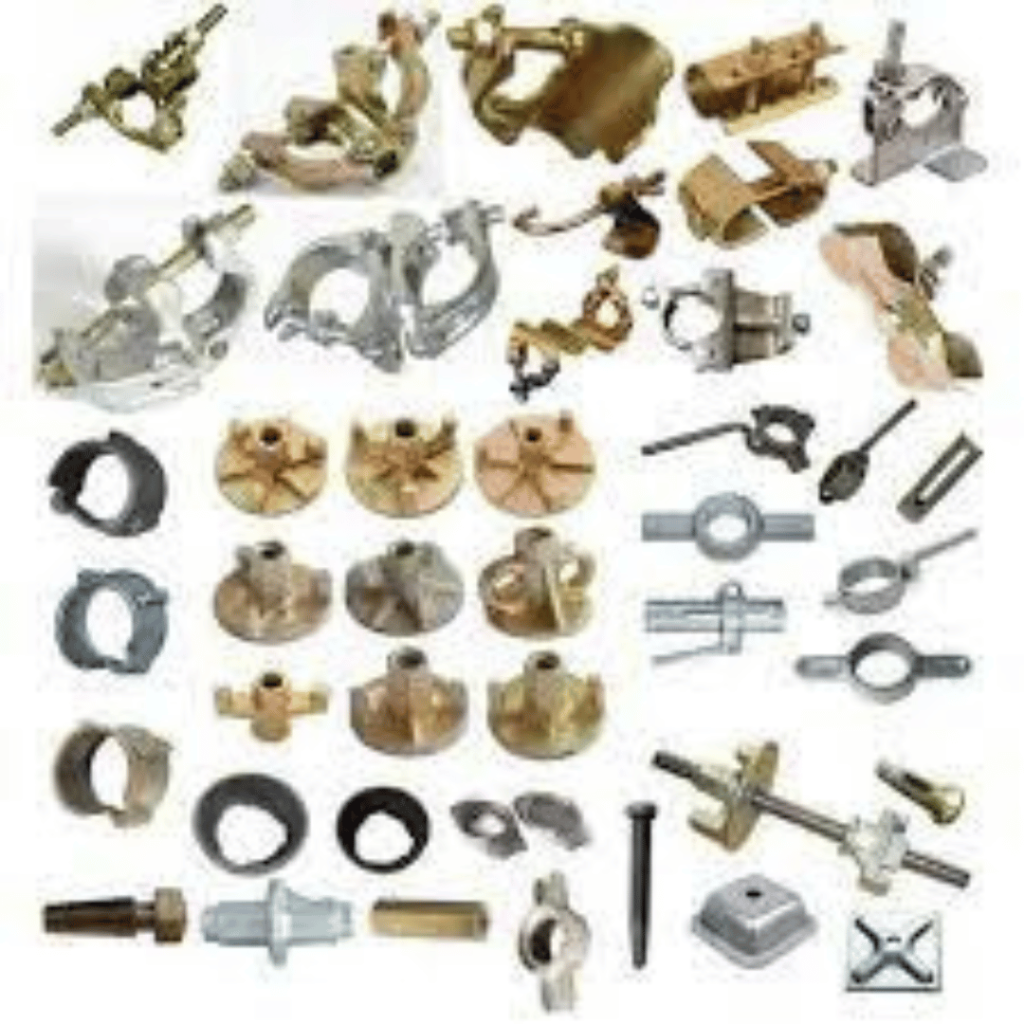
When it comes to ladder safety on construction sites, the right scaffolding accessories can make all the difference. By providing additional support, adjustability, and stability, scaffolding accessories such as ladder jacks, ladder levelers, and ladder stabilizers are essential tools for ensuring safe and efficient work environments.
Ladder Jacks
Ladder jacks are invaluable accessories that provide extra support for two ladders on a scaffold or plank. They secure the ladders in place, preventing unwanted movement and wobbling. This added stability fosters confidence and peace of mind for workers who rely on ladders for various tasks. Whether it’s painting, repairing, or accessing higher areas, ladder jacks offer a practical solution for improved ladder safety.
Ladder Levelers
Ladder levelers are designed to adjust the height of one side of the ladder, compensating for uneven ground. This crucial accessory ensures that the ladder remains level and stable, even on challenging terrain. By eliminating the risk of a ladder tipping or sinking on one side, ladder levelers promote safer and more comfortable working conditions. Construction workers can focus on their tasks without worrying about the ladder’s stability, enhancing overall productivity.
Ladder Stabilizers
Ladder stabilizers are essential for preventing ladder slipping or tipping over during use. They provide an additional point of contact with the ground, distributing the ladder’s weight and increasing stability. With ladder stabilizers in place, workers can confidently ascend and descend ladders, knowing that their safety is prioritized. These accessories are particularly beneficial when working on uneven surfaces or when a secure ladder setup is crucial for the task at hand.
The use of scaffolding accessories such as ladder jacks, ladder levelers, and ladder stabilizers is a proactive step towards enhancing ladder safety on construction sites. By investing in these tools, employers prioritize the well-being of their workers and create an environment that fosters productivity and efficiency.
Remember, safety comes first, and with the right accessories, construction workers can carry out their tasks with confidence and peace of mind.
Setting Up Ladders Properly for Safety
Proper ladder setup is crucial for ensuring stability and safety on the construction site. Taking the time to correctly position and secure a ladder can significantly reduce the risk of accidents and falls. Here are some essential steps to follow when setting up ladders:
1. Choose Stable Ground
Before placing a ladder, ensure that the ground is firm, level, and free from debris. Avoid unstable surfaces that could cause the ladder to wobble or shift during use. If necessary, use plywood or a ladder stabilizer to create a stable base.
2. Secure the Ladder
Once the ladder is in position, it should be properly secured to prevent movement. Attach non-slip feet or ties to the ladder’s base to ensure it stays in place. This extra stability will help prevent the ladder from sliding or tipping over.
3. Set the Correct Ladder Angle
The ladder angle plays a crucial role in its stability. For optimal safety, position the ladder at a 4:1 ratio, meaning for every four feet of height, the ladder should be placed one foot away from the wall or support it’s leaning against. This angle provides a stable balance and helps distribute weight evenly.
“Proper ladder setup is crucial for ensuring stability and safety on the construction site.”
By following these guidelines for ladder setup, construction workers significantly reduce the risk of accidents and create a safe working environment. Implementing these practices not only protects the individuals using the ladder but also contributes to overall workplace safety.
Climb Ladders Safely for Accident Prevention
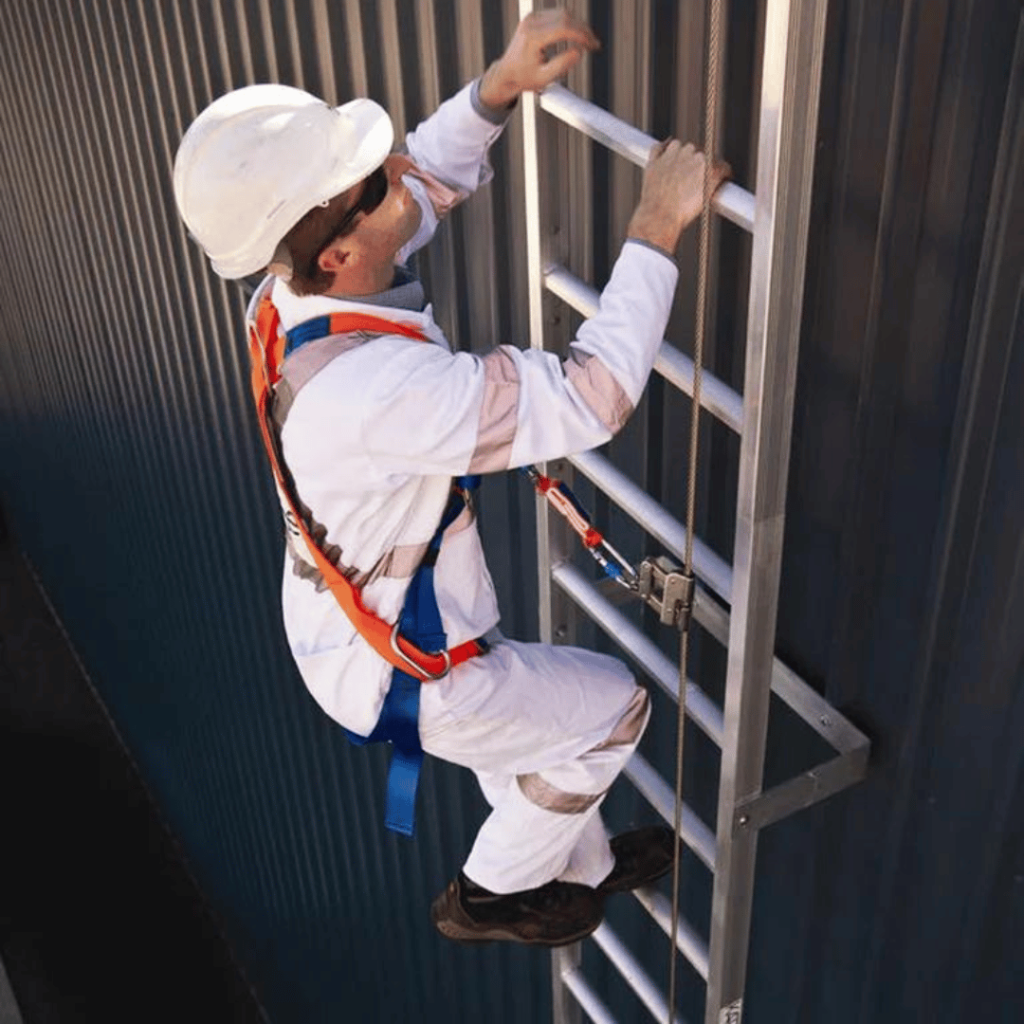
Safe ladder climbing techniques are crucial for preventing accidents and falls. By following proper ladder safety guidelines, workers can reduce the risk of injuries and ensure a secure climbing experience.
Here are some essential ladder climbing tips to keep in mind:
- Maintain three-point contact: Always maintain three-point contact with the ladder to ensure stability. This means keeping both feet and one hand in contact with the ladder at all times. It provides a secure grip and minimizes the chances of slipping or losing balance.
- Face the ladder and use both hands to grip the rungs: When climbing a ladder, face the ladder directly and use both hands to grip the rungs firmly. This grip provides better stability and control while ascending or descending the ladder.
- Avoid carrying tools and materials while climbing: To maintain balance and stability, avoid carrying tools or materials while climbing a ladder. Instead, use a tool belt or hoist to transport items safely to the desired height. This reduces the risk of accidents caused by a lack of balance or restricted movement.
By following these ladder climbing safety measures, workers can significantly reduce the risk of accidents and injuries on construction sites.
Promoting Ladder Safety as a Team Effort
Ladder safety is of utmost importance on construction sites, and it requires the active participation and cooperation of everyone involved. By fostering a culture of ladder safety awareness and implementing effective safety protocols, construction teams can work together towards creating a safer work environment.
Here are some key ways to promote ladder safety as a team effort:
- Encourage coworkers to follow ladder safety guidelines: Emphasize the importance of adhering to safety protocols and encourage all team members to use ladders correctly and responsibly. Reinforce the use of appropriate safety equipment and practices.
- Report unsafe ladder conditions or behavior: Establish an open communication channel where workers can report any unsafe ladder conditions or observed unsafe ladder usage. It’s crucial to promptly address and rectify any potential hazards to prevent accidents and injuries.
- Conduct regular safety meetings and training sessions: Schedule periodic safety meetings to discuss ladder safety measures, share best practices, and address any concerns or questions. Training sessions can provide practical guidance on ladder usage, inspection, and maintenance, ensuring that everyone is well-informed and equipped with the necessary knowledge and skills.
- Regularly review and update safety protocols: Safety protocols should be reviewed and updated regularly to reflect the latest industry standards and best practices. This ensures that the safety measures in place align with current guidelines, technologies, and regulations. Consider conducting safety audits and assessments to identify any gaps or areas for improvement in ladder safety protocols.
Remember, prioritizing ladder safety requires a collective effort, and every team member has a role to play in creating a safe work environment. By working together and promoting awareness, construction sites can minimize the risk of ladder accidents and prioritize the well-being of all workers.
Benefits of Promoting Ladder Safety as a Team Effort
| Benefits | Description |
|---|---|
| Reduced risk of accidents | By promoting ladder safety as a team effort, the chances of accidents and injuries on construction sites decrease significantly. When everyone follows safety protocols and reports unsafe conditions, potential hazards can be promptly addressed. |
| Improved safety culture | Creating a culture of safety not only enhances ladder safety but also influences overall safety practices on construction sites. When ladder safety is prioritized and actively promoted, it sets a positive example and encourages workers to follow safety guidelines in other aspects of their work as well. |
| Enhanced communication | Promoting ladder safety as a team effort fosters open communication and collaboration among workers. Reporting unsafe ladder conditions or behavior encourages ongoing dialogue about potential hazards and allows for prompt intervention. |
| Continuous improvement | Regular safety meetings and training sessions provide opportunities for continuous improvement. By reviewing safety protocols, sharing best practices, and updating guidelines, construction teams can continually strive for enhanced ladder safety. |
Conclusion
Ensuring construction site safety is of utmost importance, and selecting the appropriate scaffolding ladder and adhering to ladder safety guidelines play a crucial role in achieving this goal. Scaffold steel ladders, when used in conjunction with the right scaffold accessories, offer durability and stability, making them an excellent choice for construction sites.
In addition to choosing the right ladder, implementing proper ladder placement is essential. Ladders should be placed on stable surfaces and secured with ladder brackets or support devices to prevent slipping and wobbling. Regular maintenance and inspection of ladders are also necessary to identify any signs of damage and promptly repair or replace them.
Safe ladder climbing practices should be followed at all times. Maintaining three-point contact, facing the ladder while climbing, and using both hands to grip the rungs are vital to prevent accidents and falls. Tools and materials should be transported using tool belts or hoists instead of being carried while climbing.
Lastly, ladder safety should be approached as a team effort. By prioritizing ladder safety, construction sites can create a culture of awareness and adherence to safety protocols, minimizing accidents, and fostering a safer and more efficient work environment overall.
FAQ
What factors should I consider when choosing a scaffolding ladder?
When choosing a scaffolding ladder, it’s important to consider the height at which you need to work and the type of work you’ll be doing.
What types of ladders are suitable for different heights?
Step ladders are ideal for low to medium heights, while extension ladders provide the reach needed for higher places.
Why are scaffold steel ladders popular for construction sites?
Scaffold steel ladders are popular due to their durability, strength, and enhanced stability when used on scaffolding structures.
How can I ensure ladder safety on construction sites?
It’s important to follow ladder safety guidelines, choose the right ladder for the job, inspect and maintain ladders regularly, properly place ladders on stable surfaces, and utilize scaffolding accessories like ladder jacks and stabilizers.
Why is ladder maintenance and inspection important?
Regular maintenance and inspection of ladders are essential for ensuring their safety, preventing accidents, and maintaining their longevity.
How should I properly place ladders for safety?
Ladders should be placed on firm, level surfaces and secured with ladder brackets or support devices. The base of the ladder should be set at a quarter of the ladder’s height away from the wall or structure it is leaning against.
How can scaffolding accessories enhance ladder safety?
Scaffolding accessories such as ladder jacks, ladder levelers, and ladder stabilizers can significantly enhance ladder safety by providing additional support, adjusting ladder height on uneven ground, and preventing ladder slipping or tipping over.
What is the proper setup for ladders?
Ladders should be placed on stable ground and secured to prevent movement. The ladder angle should be set at a 4:1 ratio, and non-slip feet or ties should be used to secure the ladder’s base and prevent sliding.
What are some ladder climbing safety techniques?
Workers should maintain three-point contact with the ladder, climb facing the ladder, use both hands to grip the rungs, and transport tools and materials using a tool belt or hoist instead of carrying them while climbing.
How can ladder safety be promoted as a team effort?
Encouraging coworkers to follow ladder safety guidelines, reporting unsafe ladder conditions or behavior, and conducting regular safety meetings and training sessions can foster a culture of ladder safety awareness on construction sites.

